Sharks are some of the most fascinating and misunderstood creatures in the ocean. For scuba divers, encountering these graceful animals can be one of the most memorable experiences. Contrary to popular belief, sharks are not mindless predators. They exhibit a range of behaviors depending on the species, environment, and situation. In this article, we’ll explore common shark species, their unique behaviors, where you can swim with them, and why they are vital to the health of our oceans.
Why Do Sharks Matter?
Sharks play a vital role in maintaining the balance of marine ecosystems. As apex predators, they regulate the populations of other species, ensuring that no single group dominates the ecosystem. By keeping prey species in check, sharks help maintain healthy coral reefs, seagrass beds, and fish populations, promoting biodiversity. Their presence indicates a well-functioning ecosystem, and their absence can lead to a cascade of negative effects.
Despite their importance, many shark species are under threat due to overfishing, habitat loss, and climate change. Protecting sharks is not just about preserving an iconic species; it’s about safeguarding the health of the oceans we depend on.
Common Shark Species and Their Behaviors
Let’s dive into some of the most common shark species you may encounter while scuba diving and explore their unique behaviors.
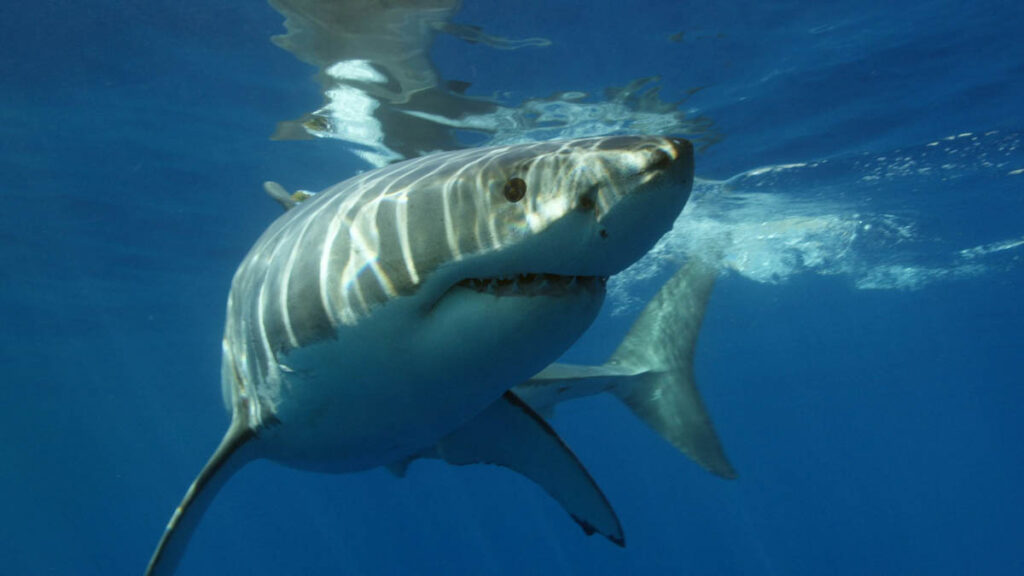
1. Great White Shark (Carcharodon carcharias).
The great white shark is perhaps the most famous shark, known for its powerful build and inquisitive nature. Contrary to their portrayal in media, great whites are cautious predators and tend to avoid conflict unless provoked. They can be seen slowly cruising the surface or making sudden bursts of speed when hunting seals. They are naturally curious about divers and boats but rarely show aggressive behavior towards humans. Being in the water with these impressive sharks is a life-changing experience!
- Top dive spot: Neptune Islands, Australia.
- Experience level: No dive experience needed (surface cage diving).
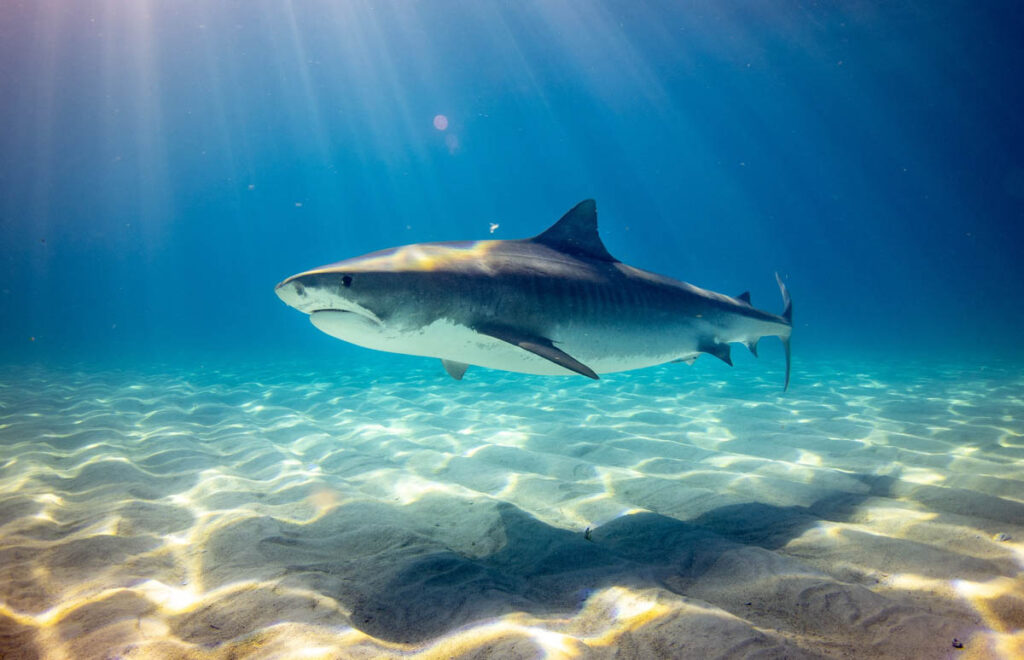
Photo by Gerald Schömbs on Unsplash
2. Tiger Shark (Galeocerdo cuvier).
Tiger sharks are known for their broad diet and distinctive tiger-like stripes. Unlike some other sharks, tiger sharks are often bolder and more opportunistic. They patrol coastal waters, where they may come into contact with human activity. Divers should approach tiger sharks with respect, as they are known to investigate objects closely, but are generally laid-back to dive with.
- Top dive spots: Tiger Beach, Bahamas, or Fuvahmulah, the Maldives.
- Experience level: Advanced Open Water Diver.
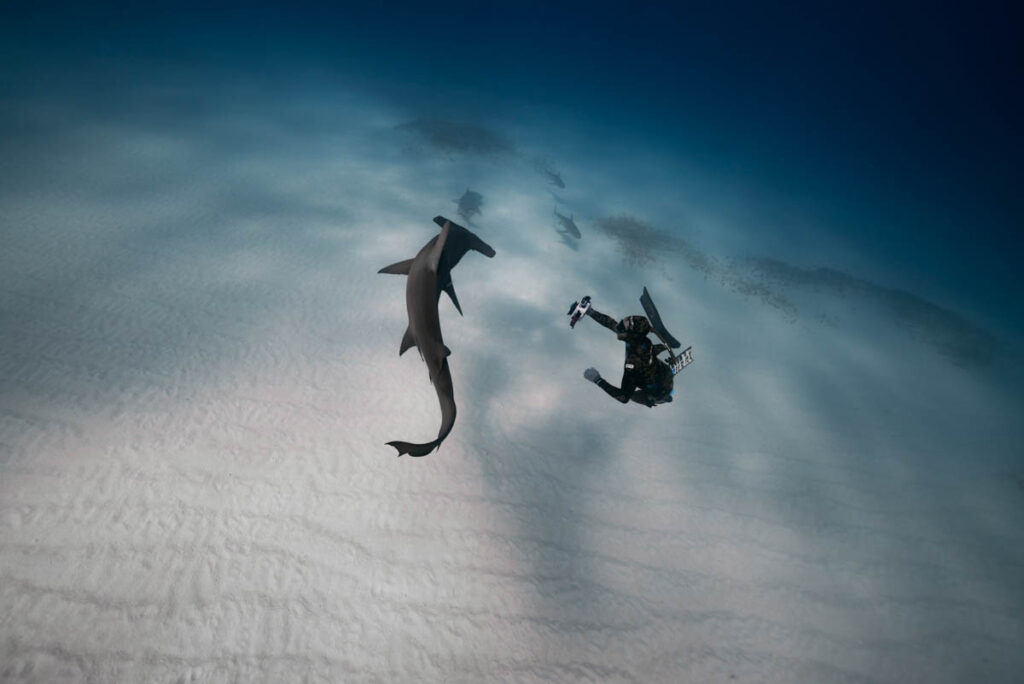
3. Great Hammerhead Shark (Sphyrna mokarran).
The great hammerhead shark is the largest of the hammerhead species and has a distinctive head and tall dorsal fin. These sharks are solitary and prefer to hunt alone, often feeding on stingrays, small fish, and cephalopods. Their wide head allows them to detect prey hidden beneath the sand, using special sensory organs. While great hammerheads are cautious around humans, they come close to divers, and their size and unusual shape make them a jaw-dropping sight.
- Top dive spot: Bimini, Bahamas.
- Experience level: Snorkeler, Freediver, or Open Water Diver.
4. Scalloped Hammerhead Shark (Sphyrna lewini).
Scalloped hammerheads are smaller than great hammerheads and have a more rounded, “scalloped” edge on their wide heads. They are known to swim in large schools and generally keep their distance from divers. These sharks are frequently seen along continental shelves and seamounts, particularly around island chains. Their schooling behavior makes them an impressive sight.
- Top dive spots: Galápagos Islands or Cocos Island, Costa Rica.
- Experience level: Advanced Open Water Diver with at least 50 logged dives and comfortable with deep diving, swell, and currents.
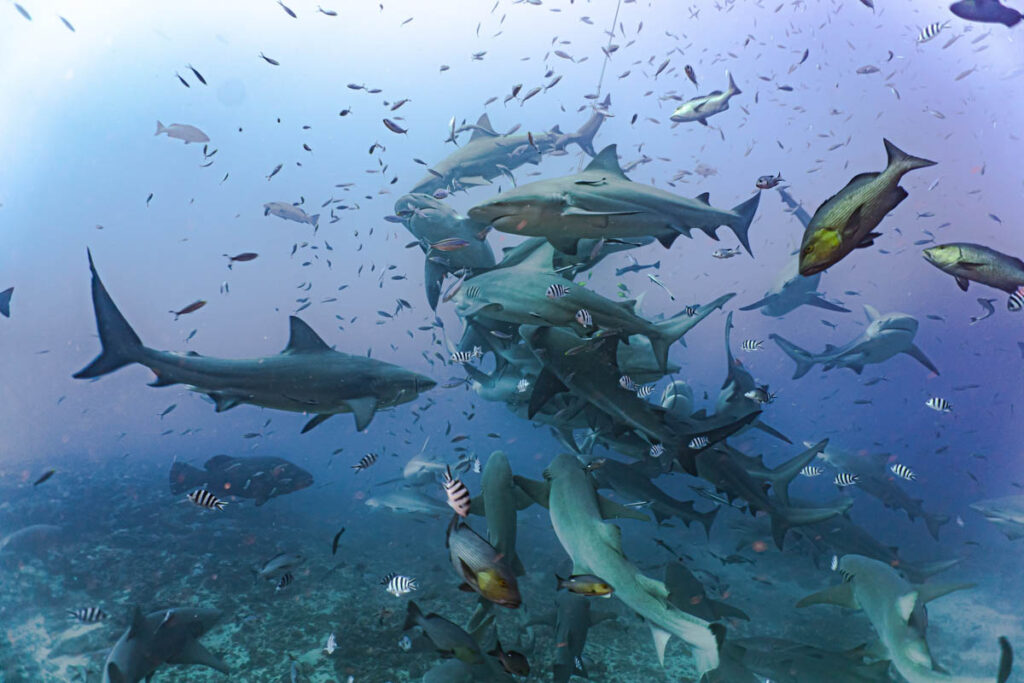
Photo by Johnny Africa on Unsplash
5. Bull Shark (Carcharhinus leucas).
Bull sharks are known for their ability to tolerate both salt and freshwater, which allows them to swim up rivers and into estuaries. They are robust, stocky sharks with a reputation for being territorial, especially in murky waters. While they have a reputation for aggression, this is largely due to their proximity to human activity rather than their temperament. They are very laid-back around divers and fascinating to dive with.
- Top dive spots: Playa del Carmen, Mexico, or Pacific Harbor, Fiji.
- Experience level: Advanced Open Water Diver.
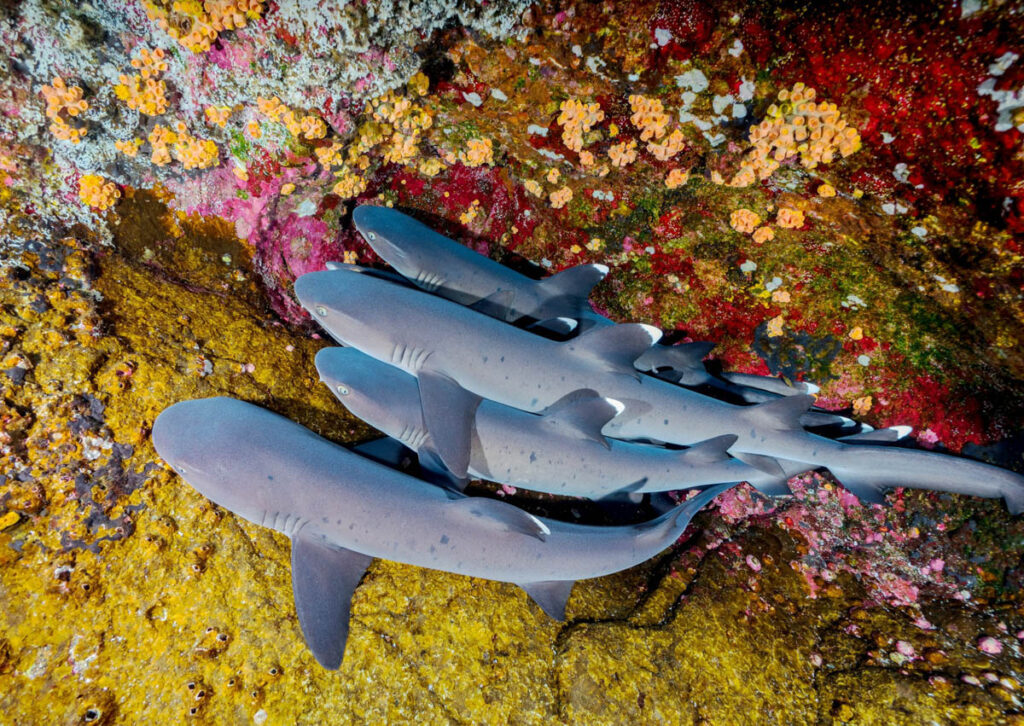
Photo by Francisco Jesús Navarro Hernández on Unsplash
6. Reef Sharks (Carcharhinus spp.).
Several species of reef sharks, including blacktip and whitetip reef sharks, are commonly found patrolling coral reefs. These sharks are typically non-aggressive and feed on smaller fish and invertebrates. Reef sharks are often curious about divers but maintain a healthy distance. Their predictable behavior and frequent appearance make them popular with divers and snorkelers alike.
- Top dive spots: The Maldives or the Great Barrier Reef, Australia.
- Experience level: Open Water Diver to Advanced.
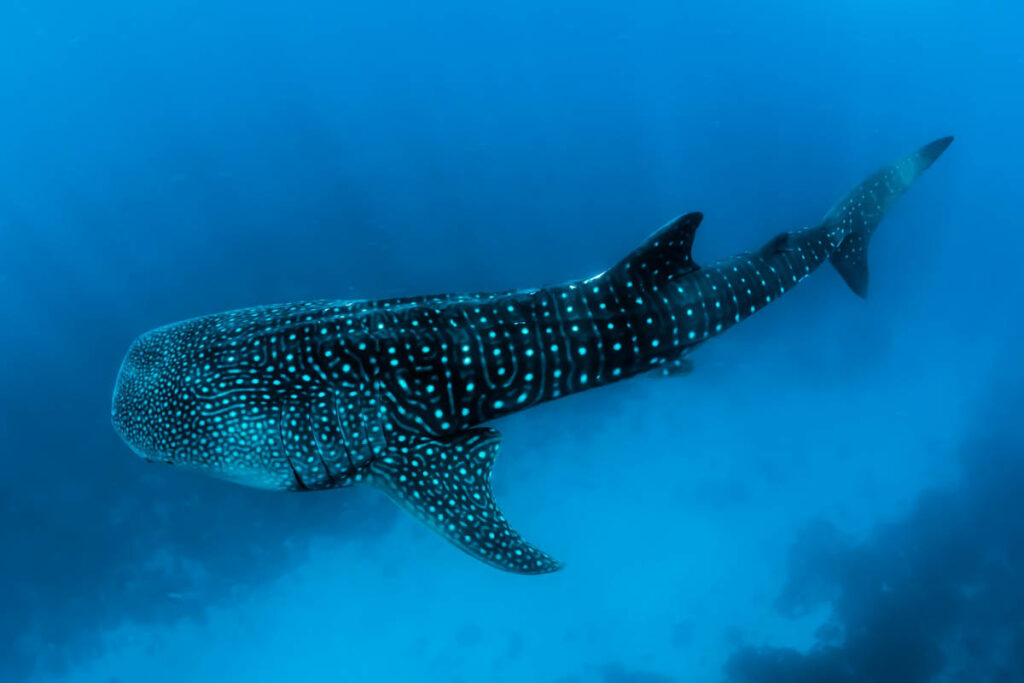
7. Whale Shark (Rhincodon typus).
The whale shark is the largest fish in the ocean, and it is a filter feeder that poses no threat to humans. These spotty giants move slowly through the water, feeding on plankton and small fish. They are known for their gentle nature and can sometimes allow divers and snorkelers to swim alongside them for extended periods.
- Top dive spots: Ningaloo Reef, Australia, Cenderawasih Bay, Indonesia or the Socorro Islands, Mexico.
- Experience level: Snorkeler to Experienced (depending on the destination).
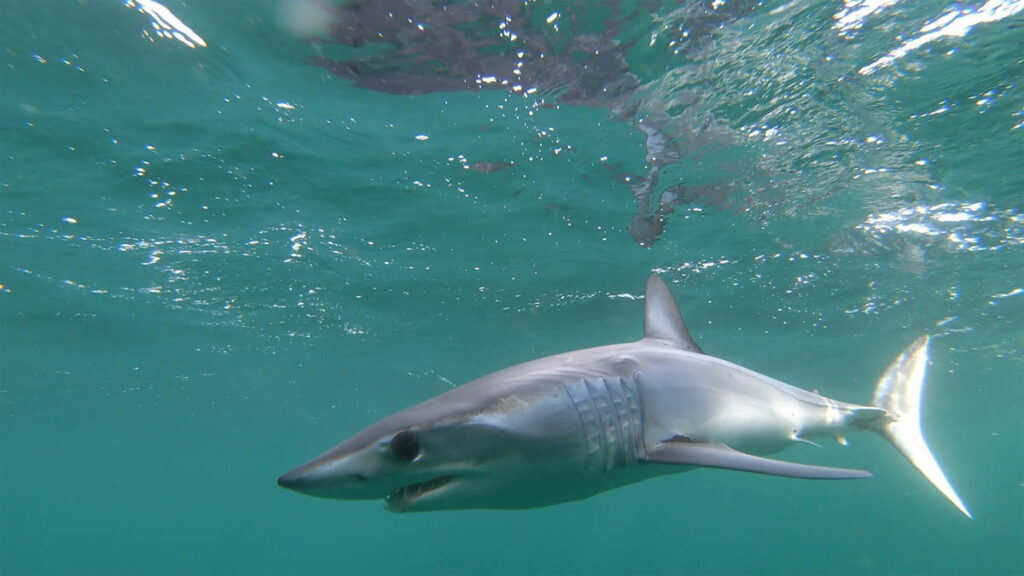
8. Shortfin Mako Shark (Isurus oxyrinchus).
Makos are among the fastest sharks in the ocean and are known for their agility and speed during hunting. Makos can be curious but also wary of divers. They have a presence about them and move very fast in the water; coming close to investigate items of interest and then moving away.
- Top dive spots: Azores, Portugal, or Cape Point, South Africa.
- Experience level: Snorkelers comfortable with deep open water and potential swell.
9. Blue Shark (Prionace glauca).
Compared to mako sharks, blue sharks offer a much more relaxed dive experience. These sharks are slender, open-ocean sharks known for their striking blue color and large, round eyes. They are usually non-aggressive and relaxed around divers but are inquisitive about everything. Being open-ocean sharks, they investigate anything new in their environment.
- Top dive spots: Cape Point, South Africa, or Rhode Island, USA.
- Experience level: Snorkeler comfortable with open waters.
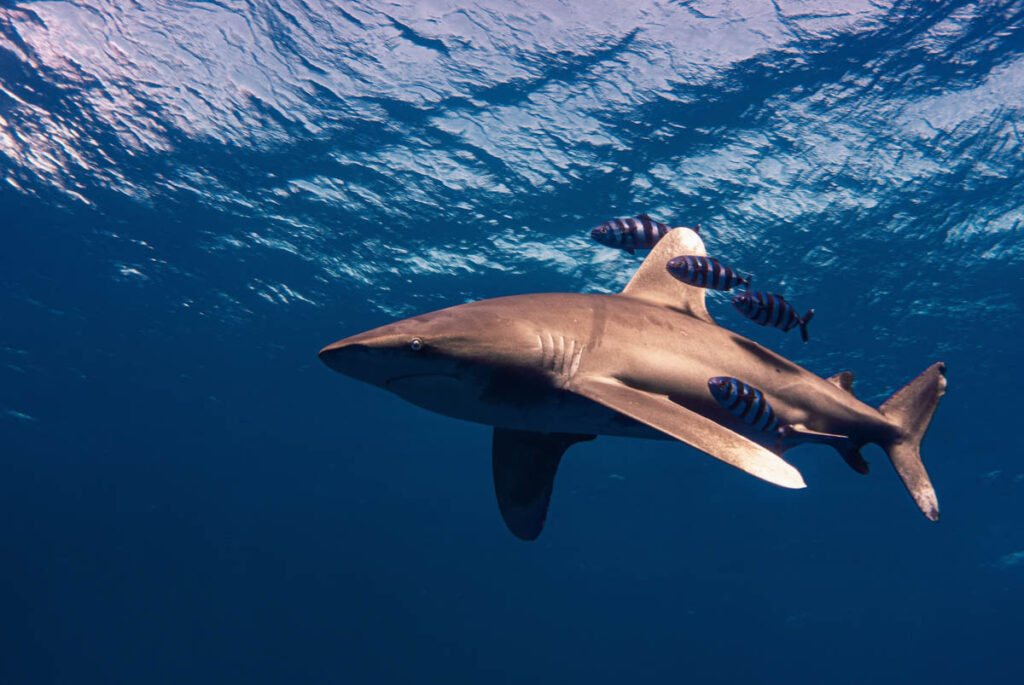
10. Oceanic Whitetip Shark (Carcharhinus longimanus)
The oceanic whitetip shark is a pelagic species known for its long, wing-like pectoral fins and distinct white tips on its fins. These sharks are highly inquisitive and often approach divers in open water. Unlike many other species, oceanic whitetips tend to be bolder and more persistent in their investigations, which is why divers should always maintain eye contact and remain aware of their surroundings when encountering them.
- Top dive spots: Cat Island, Bahamas, or Egypt’s Red Sea.
- Experience level: Experienced divers due to the sharks’ bold nature.
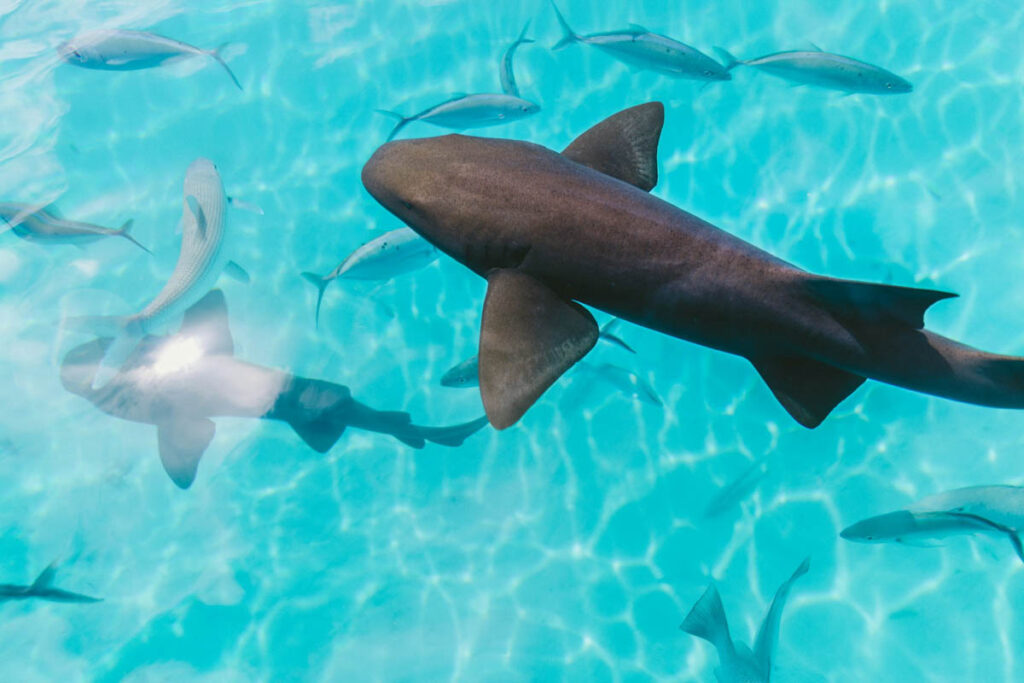
11. Nurse Shark (Ginglymostoma cirratum).
Nurse sharks are slow-moving bottom-dwellers often found resting on the seafloor during the day. They are not aggressive and typically feed on small fish, crustaceans, and mollusks. Divers can watch nurse sharks easily, as they tend to be indifferent to human presence. If you’ve just got your diving license, these are great sharks to encounter to build your confidence before diving with larger shark species.
- Top dive spot: Alimatha House Reef, the Maldives, or Compass Cay, the Bahamas.
- Experience level: Snorkeler to Open Water Diver.
Do I Need Special Training to Swim With Sharks?
While no special certification is required for most shark dives, understanding shark behavior and knowing how to safely interact with sharks can enhance your safety and enjoyment of shark diving.
The SSI Shark Ecology course is an excellent resource for divers looking to understand shark behavior and conservation. This course covers shark biology, their role in ecosystems, and how to safely dive with sharks. It’s ideal for divers who want to build confidence around sharks and contribute to their conservation.






